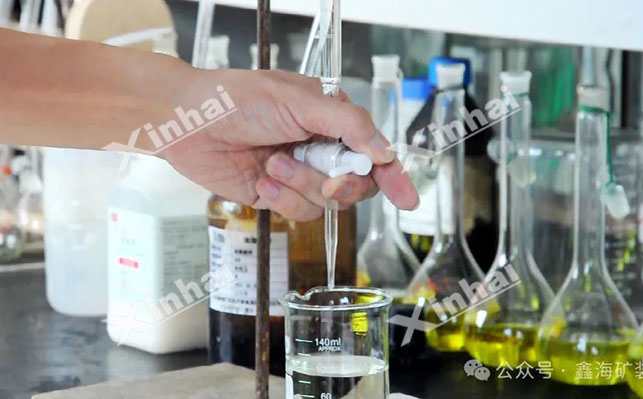If you want to know more information (such as product/process price, etc.), please contact us 24-hour telephone
At the forefront of lithium resource development, accurately testing lithium rocks is a critical step in evaluating the value of the ore and formulating development strategies. In this article, we will analyze the whole process of testing for lithium in rocks to help you accurately grasp the quality and potential of lithium resources.
1.1 On-site rapid assessment matrix
Digital core scanning technology: TSG-3 portable XRF is adopted to realize rapid on-site measurement of Li₂O content (detection limit 0.02%)
Mineral dissociation degree predetermination: establish ore crushing work index model based on QEMSCAN system (error rate <5%)
1.2 Microstructure diagnosis platform
Mineral phase identification: equipped with Zeiss EVO MA15 SEM-EDS system, which can analyze >0.5μm lithium mica flake structure.
Lattice orientation analysis: EBSD technology to determine the spatial distribution of lithium pyroxene (110) cleavage surfaces

2.1 Chemical analysis of the whole rock
X-ray fluorescence spectrometry (XRF) or other chemical analysis methods are used to determine the content of major elements in the rock, including lithium (Li), silicon (Si), aluminum (Al), iron (Fe), calcium (Ca), magnesium (Mg) and so on. The chemical analysis of the whole rock can provide the overall chemical composition of the rock and lay the foundation for the assessment of lithium resource potential.
2.2 Atomic Absorption Spectrometry (AAS)
AAS is used to accurately determine the content of lithium, and with high sensitivity and selectivity, it can accurately detect the content of trace lithium elements in rocks.
2.3 Inductively Coupled Plasma Mass Spectrometry (ICP - MS)
Used for high-precision multi-element analysis, ICP-MS is capable of simultaneously determining the content of many elements in rocks, including lithium isotopes, providing detailed chemical data for geological research and development of lithium resources.
3.1 Thermodynamic Behavior
Differential scanning calorimetry: Determination of lithium mica decomposition peaks (680-720°C)
In-situ XRD analysis: monitor the phase transformation process of β-lithium pyroxene (1050°C for 30min)
3.2 Quantitative assessment of surface properties
Zeta potential analysis: optimize flotation pH range (optimal pH for lithium pyroxene = 8.5-9.2)
Contact Angle Measurement: Screening of efficient trapping agent (contact angle >85° for oleic acid system)
4.1 Acid leaching experiment
Lithium is extracted from rocks by acid leaching experiment to determine the solubility of lithium. Acid leaching experiment can simulate the extraction process of lithium in industrial production and provide reference for the development and utilization of lithium resources.
4.2 Water immersion experiment
Used to assess the dissolution behavior of rocks in water. The water immersion experiment can understand the release characteristics of lithium in rocks in water medium, which is of great significance to the environmental impact assessment and resource recovery.
5.1 Pretreatment Technology
High-pressure roller mill closed-circuit system: product -3mm accounted for >85%, than the energy consumption reduced by 40%
XRT intelligent sorting: lithium pyroxene pre-enrichment ratio of 3:1, processing capacity of 50t/h
5.2 Flotation method
Separate specific minerals through flotation and further analyze their chemical composition. Flotation method can effectively enrich lithium minerals and improve the recovery rate of lithium.
Flotation system parameters:
Pharmacy system: NaOL 500g/t + NaOH 2000g/t
Equipment configuration: KYF-50 flotation machine + micro bubble generator
Technical index: concentrate Li₂O 6.2% Recovery rate 88
5.3 Gravity separation method
Separation is carried out by utilizing the difference in mineral density. The gravity separation method is suitable for separating lithium minerals and chalcopyrite minerals with large density differences and reducing the amount of ore for subsequent processing.
Through the above beneficiation test process, the comprehensive analysis of lithium ore is completed, and the suitable beneficiation process is finally selected. If you have lithium ore test, beneficiation program design, beneficiation plant construction and other needs, please contact us.